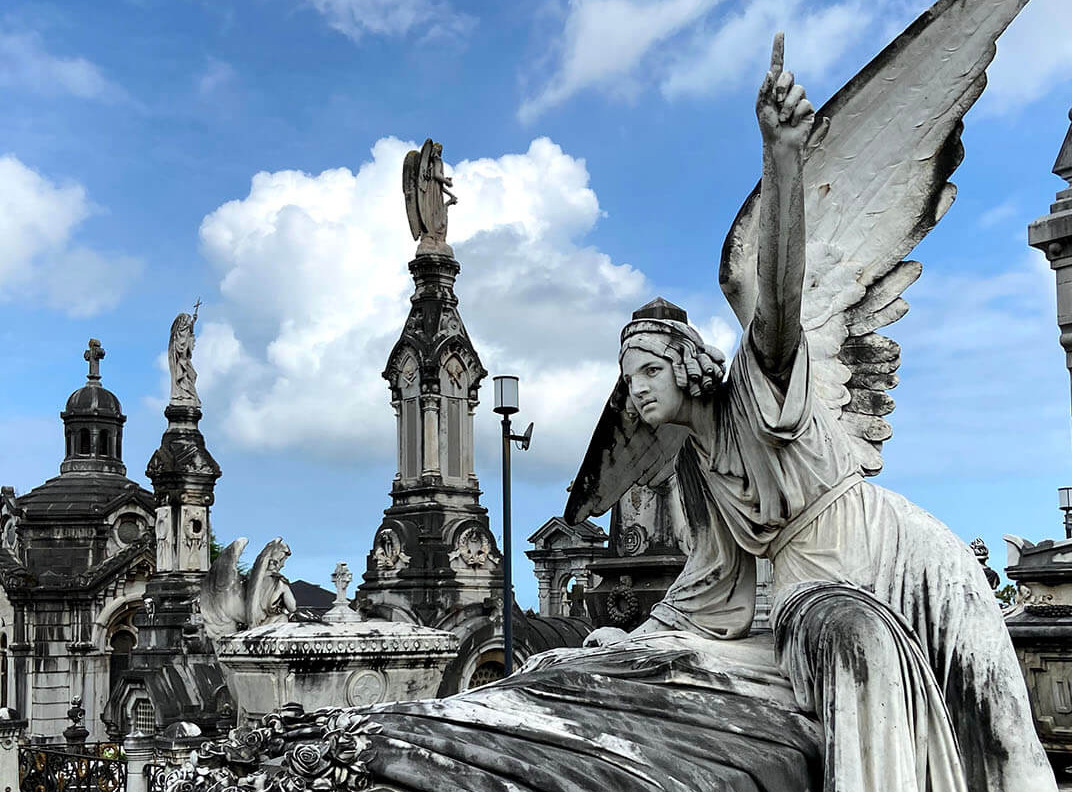
How to cope with a dark chapter of the past? What does “justice” mean when it comes to forms of commemoration? Can human rights violations ever be compensated at all?
In search of answers to these complex and very current questions, a group of young Europeans met – to negotiate transitional justice in a simulation game.
The scenario
Carillia, a country in the midst of a regime change is about to form a democracy. While the old regime is gone, its officials are still clinging to their privileges. The new democratic parties find themselves in power, but in growing disagreement. Powerful neighbor countries are trying to influence Carillia to their favor. And civil society organisations are struggling to be heard in their claim for a just commemoration of the past.
In the framework of “Let’s ConnAct! Bonding Across Borders”, the four-week simulation game workshop let the participants dive into different interest groups by taking on a role. The joint goal of the delegations: to agree on mechanisms and measurements in order to constructively and justly deal with the difficult past. Should representatives of the old regime be put on trial? What happens to the secret service’s archives? How can victims of the old regime be atoned for? And how shall society remember past crimes?
In a period of one month, the participants from all over Europe discussed about justice, negotiated peace and thereby experienced the challenge of juggling manifold interests when it comes to reconciliation and commemoration.
In a subsequent workshop module, fiction and reality were brought together: Reflecting upon their personal experiences with the simulation game first, the participants in a next step took a look at their home countries and how injustice is remembered there today.
Check out the collection of memorials and what the participants think about it below!
Remembering Injustice
How is injustice remembered in the participants’ home countries?
And what do they think about it after having dealt with different forms of transitional
justice in the simulation game?
Click through the gallery to find out!
Paul Wulf monument
Paul Wulf is a victim of forced sterilization by the Nazis. He is representing about 400, 000 people affected by this act of injustice.
Standing in the city centre of Münster -Wulf´s death place- demonstrates that the population is remembering him and the injustice that happened to Wulf.
Since the monument is very tall (3.4 m), one always sees it and “remembers” the person behind.
(Theresa, Germany)
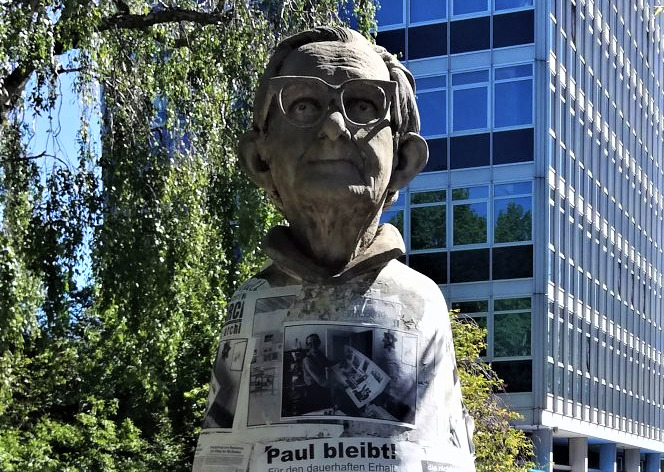
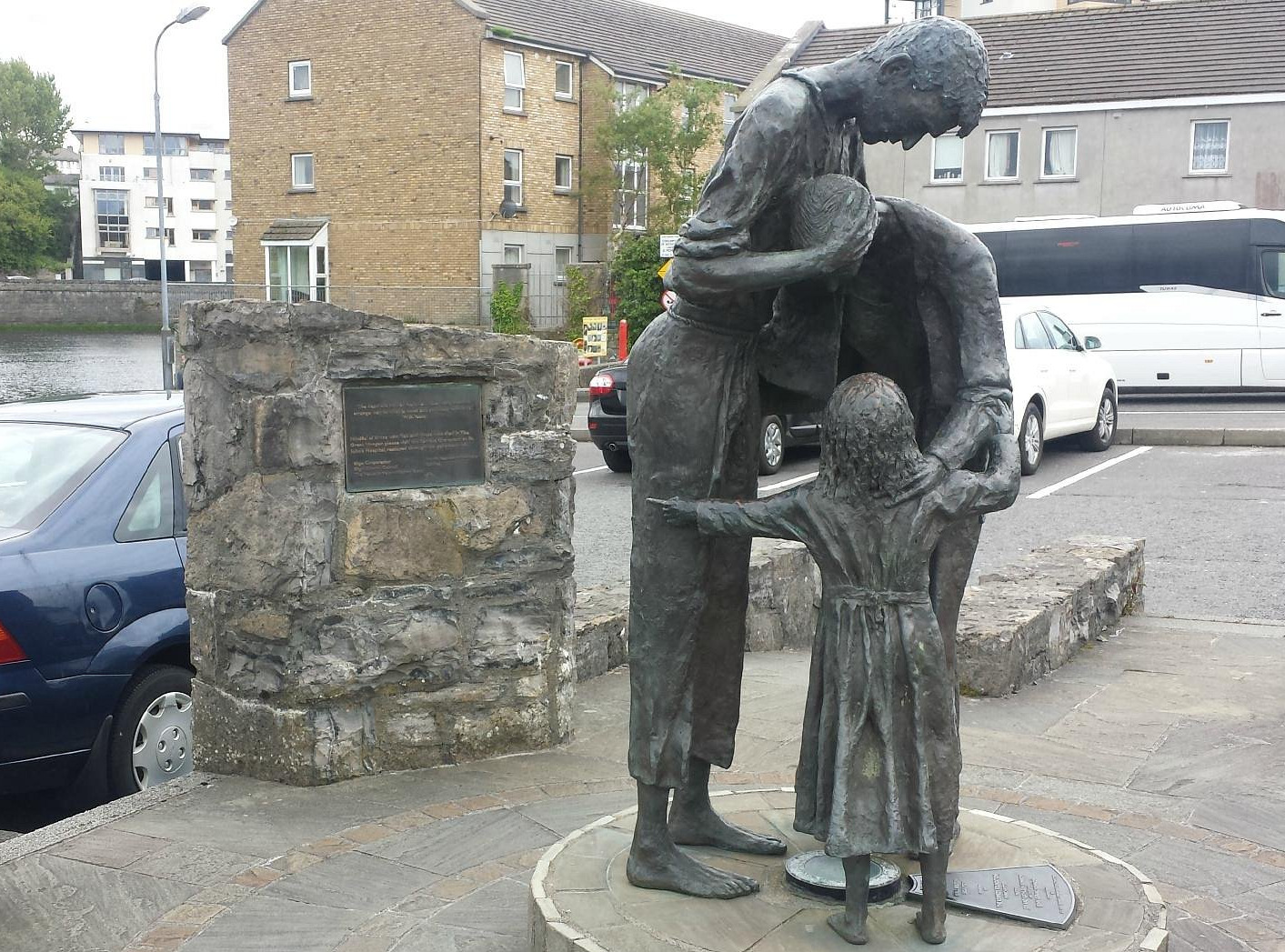
Famine memorial
This is the famine memorial in my hometown of Sligo, Ireland. It commemorates the people who perished or emigrated during the Great Famine of 1845-1852. The famine had a colossal impact on Ireland. Over ¼ of the population died or left and we are only beginning to approach the pre-famine numbers now.
I don’t have any strong feelings about this monument. It’s a sad memorial. It represents an event in our history that we still feel the impact of but rarely discuss. Despite the effects of the famine, it wasn’t even on my school’s curriculum.
(Andie, Ireland)
Accident memorial in Puertollano
This memorial commemorates an accident that happened 19 years ago. In my city there is a petrol refinery and in 2003 there was an accident that ended with the life of nine people
Personally I think this isn’t as beautiful as other monuments posted here and also its quite simple comparing to others but it’s a nice way to remember people from our hometown and give them respect.
(Natalia, Spain)
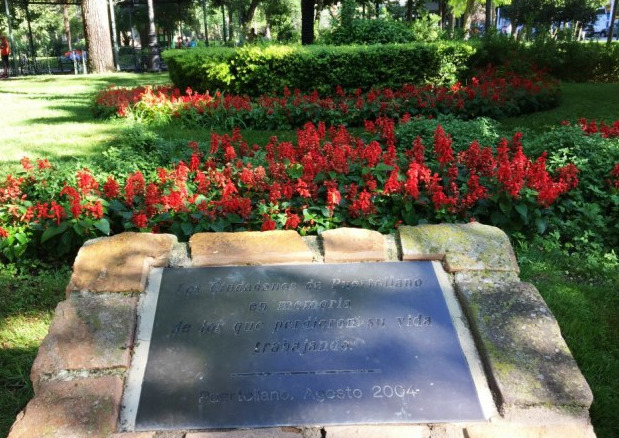
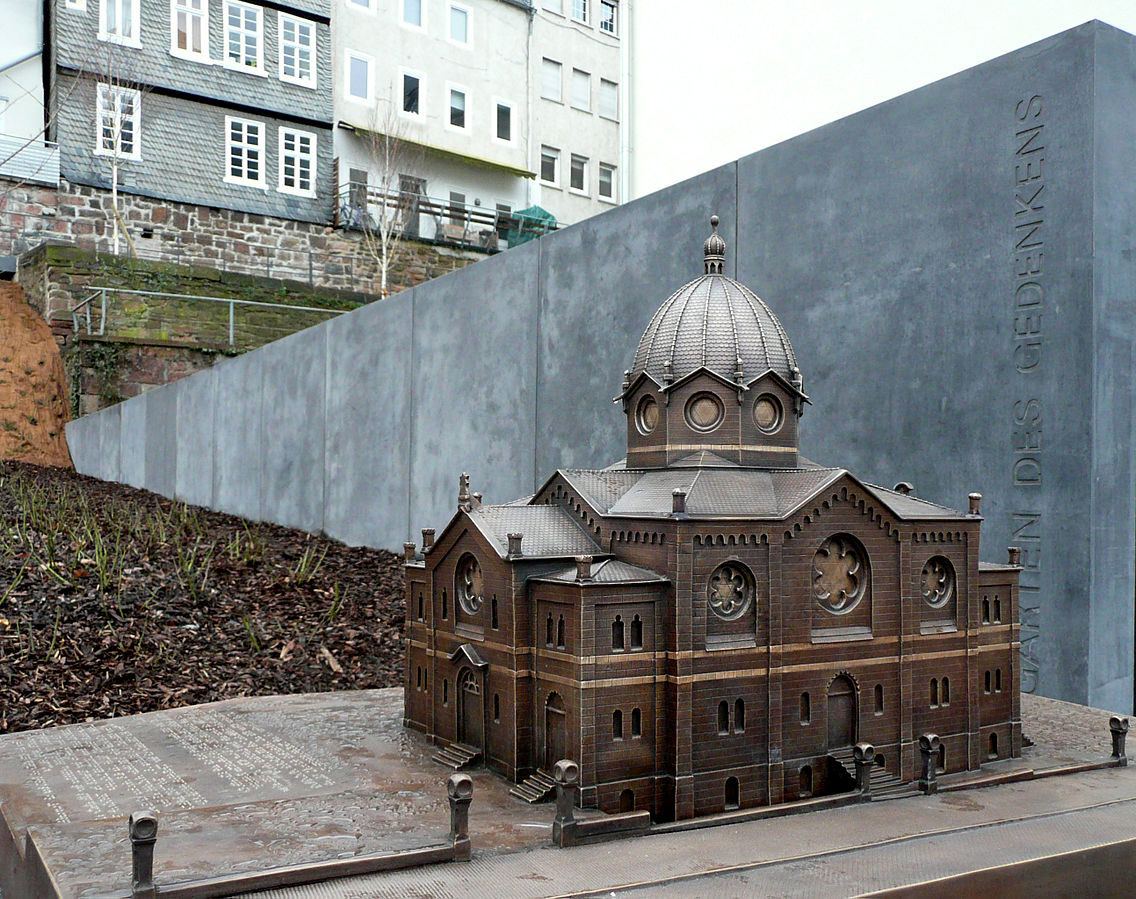
Night of Broken Glass memorial
This is the memorial of the Night of Broken Glass in Marburg.
I like the way this place was shaped: as a place of meetings – like it used to be when the synagogue had still been standing.
However, I am not sure if all the people sitting there today are aware of the historical background and the injustice that happened to the place.
(Fiona, Germany)
Colonial Wars monument
The Monument to the Overseas Combatants is a monument located in Lisbon, Portugal.
It was created to honor all the soldiers who fought in the Colonial Wars in Africa (1961-1974), it contains all the names of the combatants who died in this conflict that lasted 13 years.
Nowadays, military staff protects the monument 24/7.
In my eyes, this memorial is important to keep the memory awake since the history of this period is still very present in the lives of the survivors, their children and grandchildren.
It is crucial to remember the past and pay respect to everyone who suffered.
(Ana Matilde, Portugal)
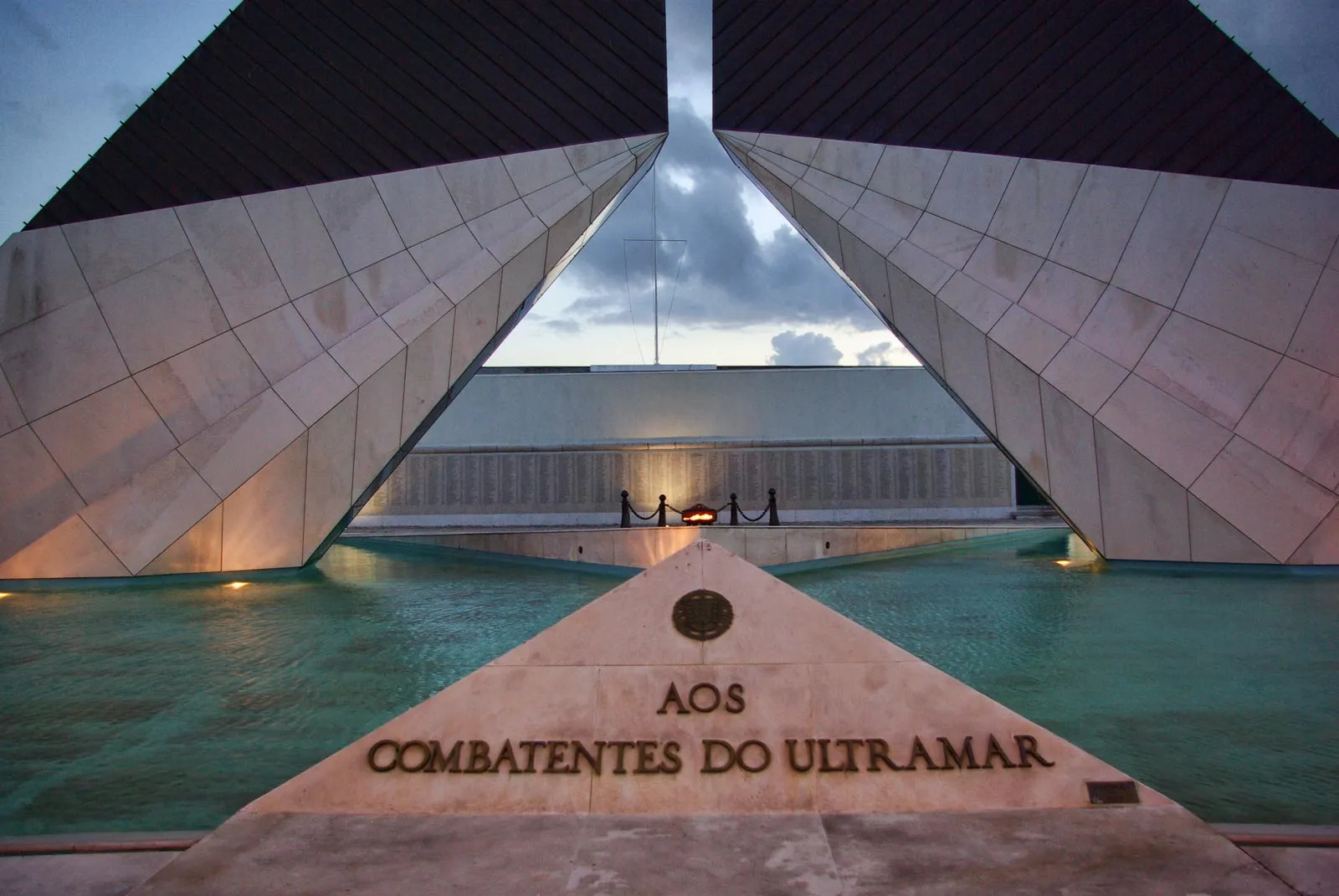
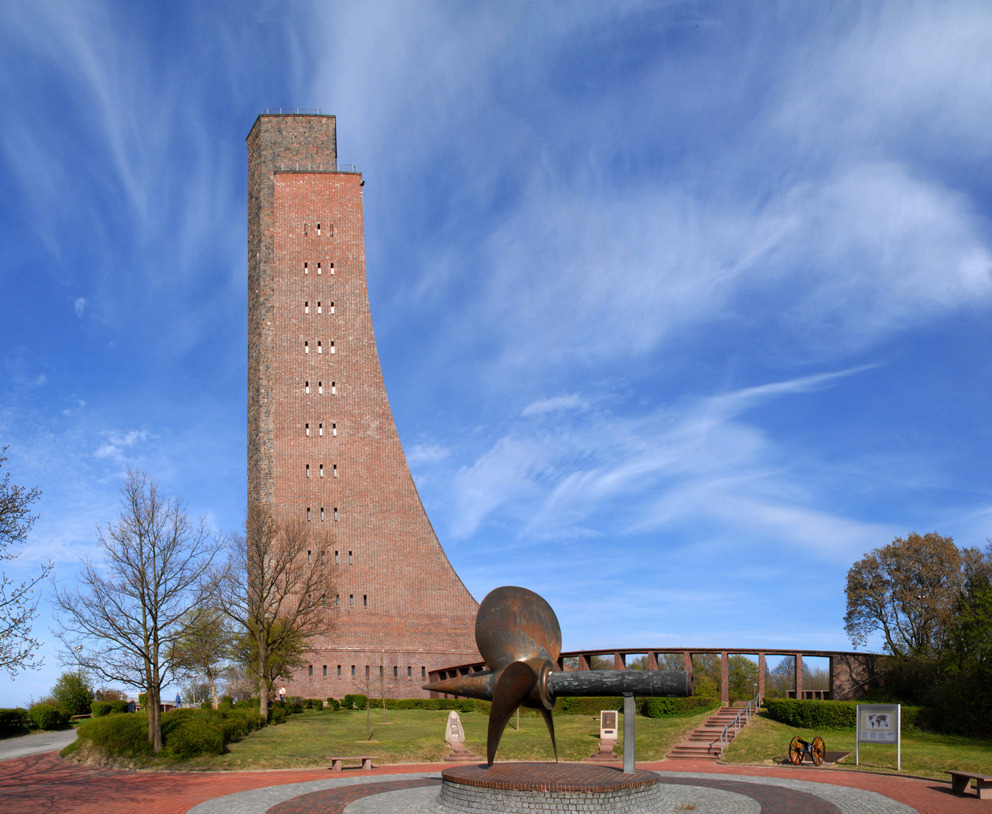
Sailors memorial
This memorial was constructed from 1927 to 1936 to commemorate fallen marine soldiers during WW1. Later, it also became a memorial for WW2 marines.
In 1954, it was rededicated in order to pay respect to all nations as a sign of reconciliation with former enemies in war. Another rededication in the 1990s made it a memorial for the sailors of all nationalities who were lost at sea.
Understandably, the building is not very popular among the local population – it is still strongly associated with the Nazi-era.
(Marei, Germany)
Spanish Civil War memorial
“The wall of remembrance” placed in the local cemetery of my hometown, Avilés, is a memorial to remember those who lost their lives during the Spanish Civil War in the 1930s.
(Laura, Spain)
